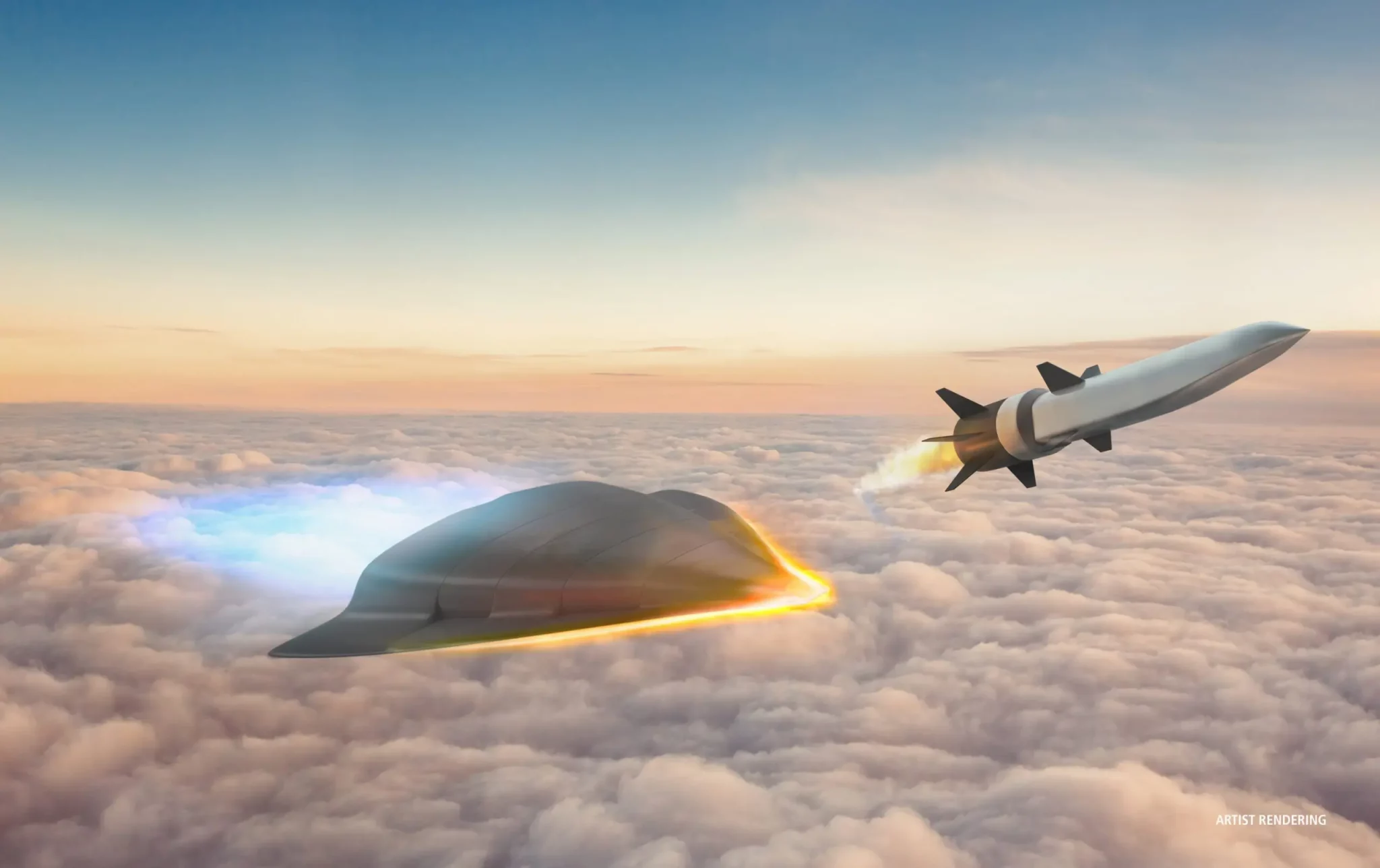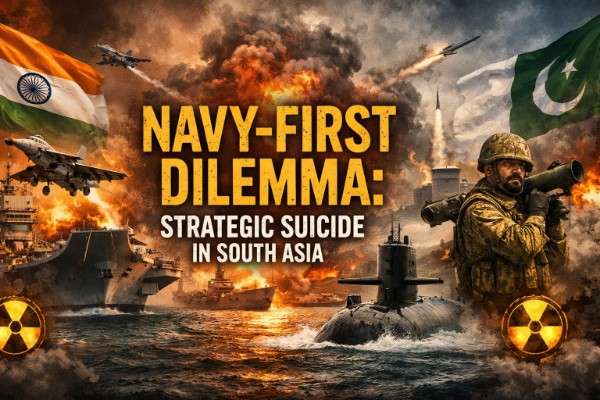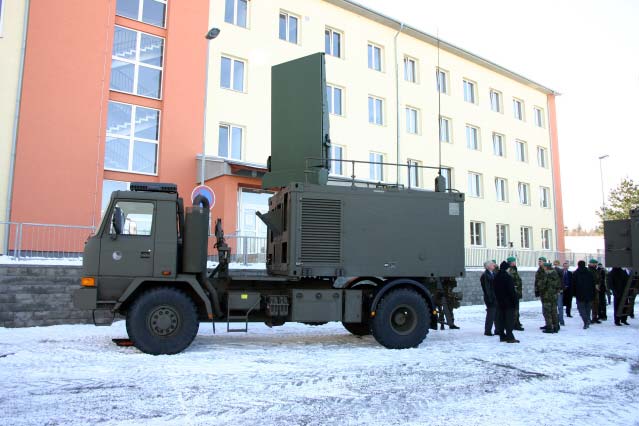Hypersonic weapons are the latest item in emerging military technologies that have a destabilizing effect on the bilateral, regional and international security environment. The intensity of the Sino-American and Russo-American arms race is also affected by hypersonic weapons. Hypersonic missiles pose a new threat to global security. Hypersonic weapons are normally defined as fast, low-flying, and highly maneuverable weapons designed to be too quick and agile for traditional missile defense systems to detect in time. These are different from ballistic missiles, as ballistic missile has a predetermined path but hypersonic missiles are highly maneuverable objects. Their maneuvering capability makes it difficult for the modern air defense systems to track or intercept these missiles. Thus speed and maneuvering capability are the main factors.
Hypersonic is defined as any object moving at a speed five times greater than the speed of sound. Interestingly, hypersonic missiles can also travel for longer distances without being detected by tracking radar. This capability means hypersonic weapons are very destructive to the enemy. Hypersonic missiles fly at an extremely fast speed and can dodge modern air defense systems very easily. Till now, not a single air defense system is capable to counter or destroy hypersonic weapons.
As Vice Chairman of the Joint Chiefs of Staff and former Commander of U.S. Strategic Command General John Hyten has stated, “Hypersonic weapons could enable “responsive, long-range, strike options against distant, defended, and/or time-critical threats [such as road-mobile missiles] when other forces are unavailable, denied access, or not preferred.” Hypersonic weapons pose a great threat to detection and interception systems due to their speed, maneuverability, and low altitude of the flight. This late detection by enemy radars compresses the response time of decision-makers to think and retaliate. In this limited time, other issues may also arise such as threat perception and escalation ladder.
Hypersonic vehicles have dual-purpose use, military as well as peaceful means. Peaceful usage includes space exploration, space launch, and transportation of humans and cargo into space. Military purpose includes targeting enemy strategic locations without being detected by enemy air defense systems. Due to their maneuverability and high speed, hypersonic weapons can evade adversary’s ballistic missile defense systems. It depends on a state whether it wants to use hypersonic technology for peaceful purposes or to create chaos in the world. Many states are developing hypersonic technologies for peaceful purposes while few for destruction.
Nations with Hypersonic Technology:
Currently, only three nations have developed these sophisticated weapons including China, Russia, and the United States of America. There are two types of hypersonic vehicles under development, Hypersonic Glide Vehicles (HGVs) and Hypersonic Cruise Missile.
Glide vehicles are the cousins of ballistic warheads: they are lofted on high-velocity boosters, separate, then use momentum and control surfaces to skip and glide through the upper atmosphere before crashing onto their targets.
Hypersonic Cruise Missiles (HCMs) are powered by an advanced propulsion system, scramjet, for powered flight.
Read More: Everything you need to know about “Tomahawk Cruise Missile”
Russia: Russia has operationalized its hypersonic weapons and armed Russian ships, aircraft, and submarines with hypersonic missiles. Russia is investing in two different hypersonic weapon programs, the first one is Avangard, and the second one is Tsirkon. Avangard is a hypersonic glide vehicle that is supposed to be launched from an Inter-Continental Ballistic Missile (ICBM). Currently Russian military has mounted Avangard hypersonic glide vehicle on SS-19 ICBM, but next year, SS-28 Sarmat ICBM will be used to launch Avangard (HGV). Reportedly, during test flights Avangard glide vehicle reached at a maximum speed of Mach 20.
Russian submarines and ships are armed with Tsirkon (Zircon) hypersonic cruise missiles while Russian MiG-31 can carry Kinzhal air-launched ballistic missiles. Zircon is a hypersonic cruise missile that can attain a maximum speed of 5 Mach. It can strike a target as far as 1000 kilometers. Russia’s development and deployment of hypersonic missiles could increase its bargaining position with the US.
China: China began working on hypersonic weapons at the start of the 21st century. Till now, China had made significant progress in the field of hypersonic weapons. China had conducted many successful tests of DF-17, which is a medium-range ballistic missile (MRBM) designed to launch hypersonic glide vehicles (HGVs). DF-17 can attain a speed of about 10 Mach, approximately equal to 12348 kilometers per hour. China has also tested the DF-41 intercontinental ballistic missile, which could be modified to carry a conventional or nuclear glide vehicle. This year, China also conducted two tests of hypersonic glide vehicles. In 2018, one US senior official noted that China is very aggressively pursuing this technology. China had conducted more than 20 tests in the last few years.
Read More: Raytheon Missiles & Defense awarded $423 million US Navy contract for SPY-6 family of radars
United States of America: the United States of America begins working on hypersonic weapons in 2007 under the Prompt Global Strike program. In 2021, US Army and American contractors conducted multiple tests of different components essential for hypersonic missiles. Pentagon also announced that, in 2022, US Army and Navy will conduct more tests of hypersonic missiles. The United States already stated that its hypersonic weapons would be armed with hypersonic weapons. Due to the nuclear blast effect, a nuclear-armed hypersonic missile would be more destructive if it is just 10 percent accurate.
Moreover, a few other states are also developing these lethal weapons including, France, Germany, Australia, North Korea, Japan, and England. Last year, North Korea also flight-tested a hypersonic glide vehicle.
Table of Contents
ToggleUmair Aslam
Umair Aslam is the Founder and Chief Executive Officer (CEO) of Global Defense Insight. He has worked as a defense journalist reporting on military modernization programs, defense industry, arms procurement, and emerging technologies.
- Umair Aslam
- Umair Aslam
- Umair Aslam














